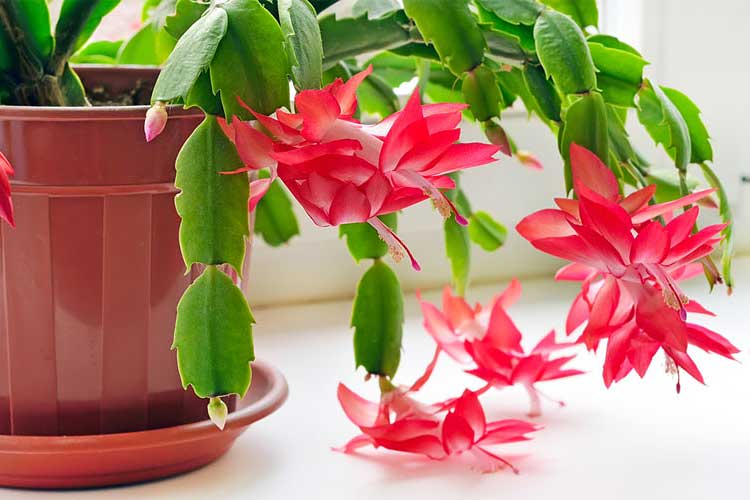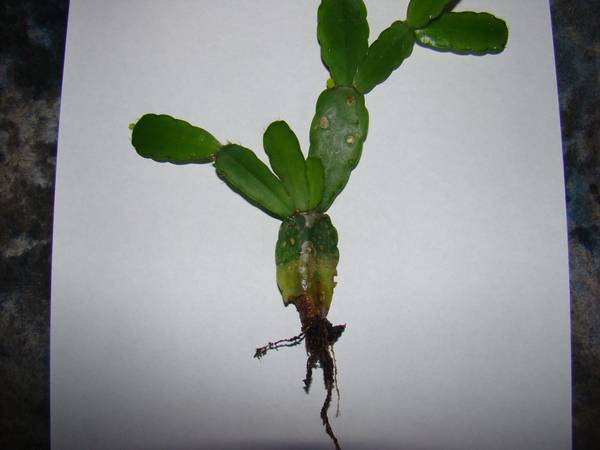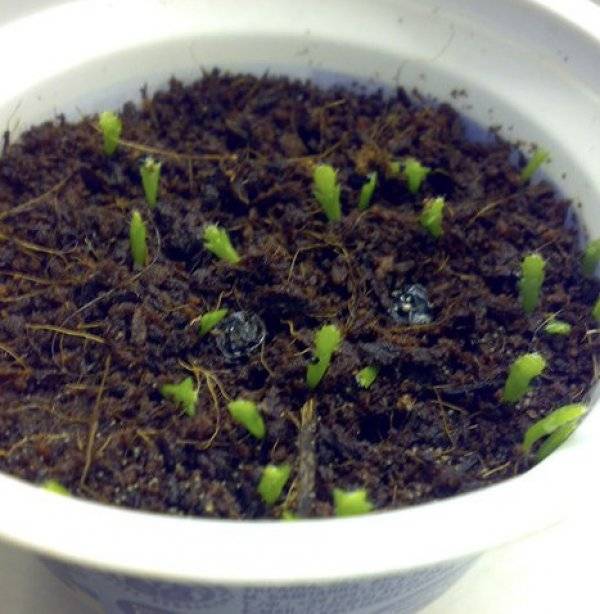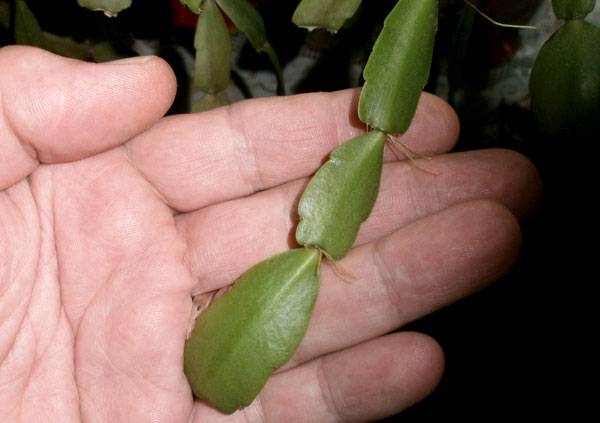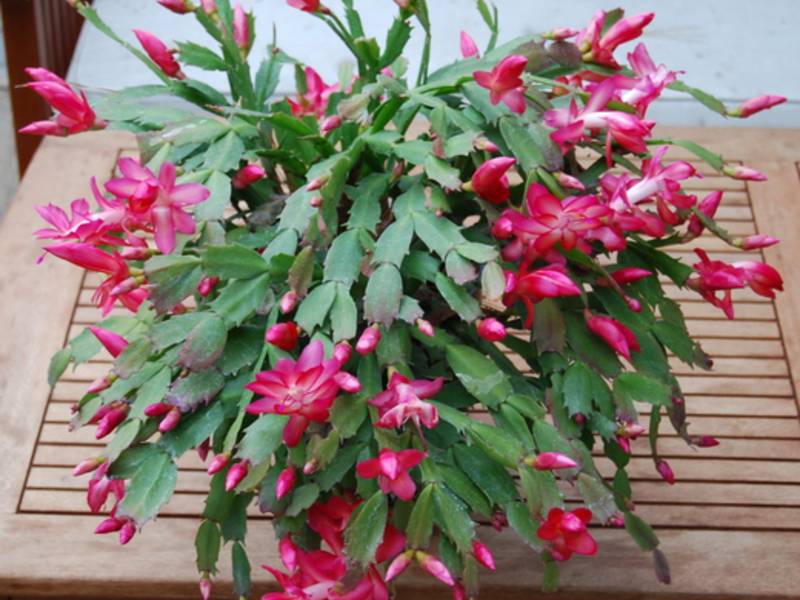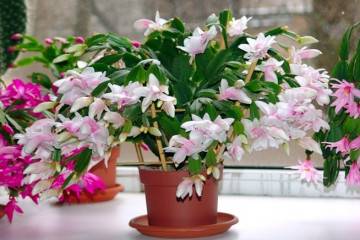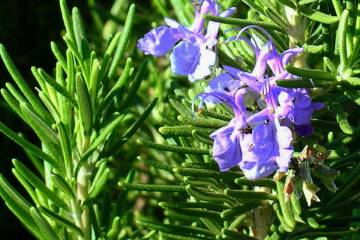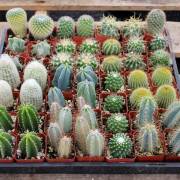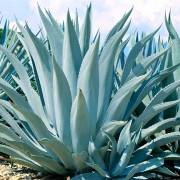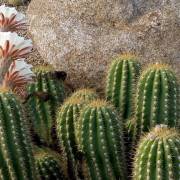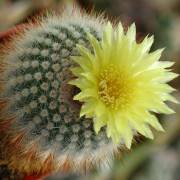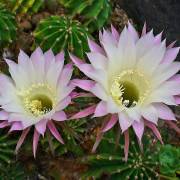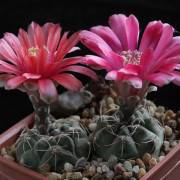How to propagate a Decembrist at home
Content:
Schlumberger, and in the everyday life of flower growers, the Decembrist is one of the most beautiful and unusual houseplants. The interesting shape of the leaves and flowers of various bright colors allow this flower to occupy a separate, honorable niche among violets and geraniums. It got its common name because the peak of its flowering occurs in winter, in particular, in December. Its cultivation and reproduction has its own characteristics.
Description of the flower
Decembrist is a type of cactus, otherwise this species is called zygocactus. Its structure resembles a designer: the leaves seem to be planted on top of each other. The needles are completely absent, and at first glance, Schlumberger does not resemble an evil thorn in any way. However, the shape of the leaves sometimes has sharp edges, characteristic of some types of cacti, for example, prickly pears.
Decembrist leaves are leathery and smooth, dense, but not fleshy. Flowers, depending on the type of plant, can be located both at the ends of the shoots, and cover the plant completely.
Decembrist: breeding at home
To decorate a house with a Decembrist, it is not at all necessary to purchase a plant in a specialized store. Self-cultivation methods are very popular. Reproduction at home can occur in several ways:
- cuttings;
- seeds;
- air layering;
- leaves;
- dividing the roots.
Below is more detailed about each breeding option for zygocactus.
Propagation of the Decembrist by cuttings
Since the Decembrist reproduces the easiest way with the help of cuttings, this method should be considered first. The most appropriate time to propagate this flower by cuttings is at the end of the growing season. It falls in late April - early May. However, a cutting taken at any other time of the year can also give rise to a healthy, robust plant.
To use the grafting method, it is necessary to initially prepare the planting material. Before you take a shoot from a Decembrist, you need to make sure that the plant is strong and healthy. A stalk can be taken from any plant you like.
It is necessary to separate the segments from the mother plant extremely carefully and carefully. Do not use scissors or knives. The escape must be taken with both hands on both sides of the junction of the sheets and carefully unscrewed, trying not to injure the Decembrist.
Dilution with apical cuttings can be done in two ways: dry and wet. In the first method, the cutting should be placed in a dry, shaded place, the temperature should be 15-18 ° C. After several days of keeping in such conditions, a transparent film forms at the site of the segment break. When it appears, the young Decembrist can be placed in a small container with nutritious soil.
With the wet method, the cutting is placed in clean, soft water.Depending on a number of factors: water quality, shoot condition, sunlight and room temperature, Decembrist segments develop an initial root system within 10-30 days.
In order for the flower to initially take on a lush, dense form, it is necessary to place several germinated cuttings in one pot.
Seed propagation
The most difficult and time-consuming method of reproduction of the Decembrist is seed. Novice growers rarely use this method, but experienced ones often choose it. Before propagating the Decembrist by seeds, you should correctly calculate the strength and capabilities, and also carefully study the step-by-step algorithm.
Planting material can be purchased in specialized stores, as well as prepare yourself at home.
When self-preparing seeds with a new shade of flowers, it is initially necessary to pollinate. To do this, you need to determine the strongest and largest flowers, collect pollen from them and transfer them to a bud of a different color using an ordinary brush.
After a few days, a fruit ovary will appear on a re-pollinated bud. With a favorable development, the Decembrist berry will ripen in 180-240 days. After that, you need to remove the seeds from it and dry them. In terms of germination, the most effective are those seeds that were prepared a year before germination, but their quality is not lost for 4-5 years.
Zygocactus should be sown in the spring. Before sowing, the seeds must be warmed up at a temperature of 45-60 ° C for 48 hours. Then soak for 2 hours in a weak solution of potassium permanganate. The seeds are laid out in the prepared nutrient soil and slightly pressed into it, but not covered with earth.
After about 20 days, the first shoots begin to sprout, and over the next decade, the seeds should germinate completely. Seedlings must be provided with timely watering, feeding and lighting for six months. After that, the Decembrist seedlings can be planted in separate containers.
Propagation by air layers
Airy root layers greatly facilitate the work of the grower, since the Decembrist can be transplanted faster than conventional cuttings. For this, segments with developed air roots are selected and carefully separated from the mother plant. Then it is necessary to place the shoot for a day in a container with a solution of water and an agent that stimulates root growth. There are many such funds in specialized departments, for example, root or phytosporin. After that, the matured shoot is planted in a nutritious soil.
Reproduction of the Decembrist leaf
Schlumberger's shoots are not full-fledged sheets, only reminding them in shape and structure. Before planting a Decembrist from a leaf, you must choose the healthiest and densest segments. For guaranteed germination, it is best to take several shoots from different sides of the mother plant. Then the leaves are dried for 48 hours, in the same way as during grafting, and placed in saturated soil. The sheet is set in the ground to the middle and the surface of the soil is sprinkled with wet sand. Then you need to cover the seedlings with polyethylene for 3-5 days.
Reproduction of a Decembrist flower at home with a part of the root
Since the Decembrists reproduce flowers quite simply and unpretentious, they also easily tolerate the division of an adult shrub into parts. To do this, you must wait until the end of the flowering period and remove old and flabby shoots.Then carefully remove the plant from the pot and cut the woody roots of the Decembrist with a sharp knife. Next, plant parts of the plant in separate pots filled with fresh, nutritious soil.
Rooting process and planting
When cuttings, shoots or leaves have a strong root system, they must be transplanted into prepared soil. When in water, the roots are clearly visible, but if the segments are contained in the substrate, then the development of the roots can be determined by growth and neoplasms.
The ideal soil for transplanting a young Decembrist will be a mixture consisting of equal proportions of sand, humus, peat and ordinary soil. To avoid diseases and pests, each of the parts must be ignited over a fire.
Follow-up care of seedlings
Schlumberger prefers diffused sunlight and moderate watering. The optimum temperature for comfortable growth and flowering is 17-24 ° C. The Decembrist needs periodic feeding; for this, mineral and organic fertilizers are suitable.
Stress must be avoided to keep the plant lush and blooming for as long as possible. Do not rearrange the indoor flower from place to place.
Diseases and pests during the reproduction of the Decembrist
If, when planting a flower, you follow all precautions and pre-disinfect the soil and tools, then the zygocactus does not threaten problems. The only caveat can arise when the plant is over-watering. If the root system of the Decembrist stays in stale water for a long time, then instead of development, decay will occur, and the planting material will be lost.
The Decembrist is an unpretentious flower that deserves love and attention. If you learn the peculiarities of reproduction and caring for it, then the buds of extraordinary beauty will be able to delight the house all winter.
